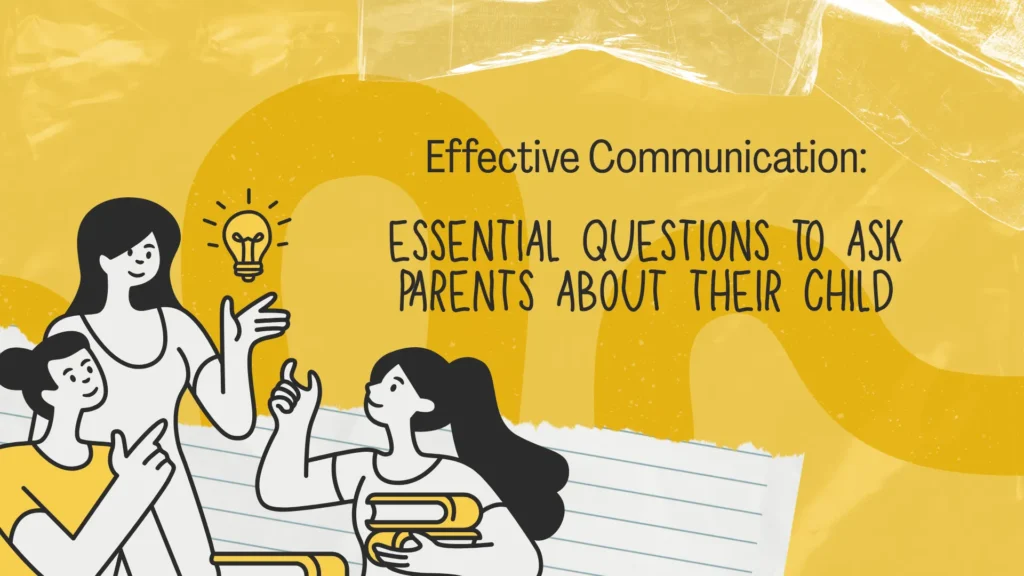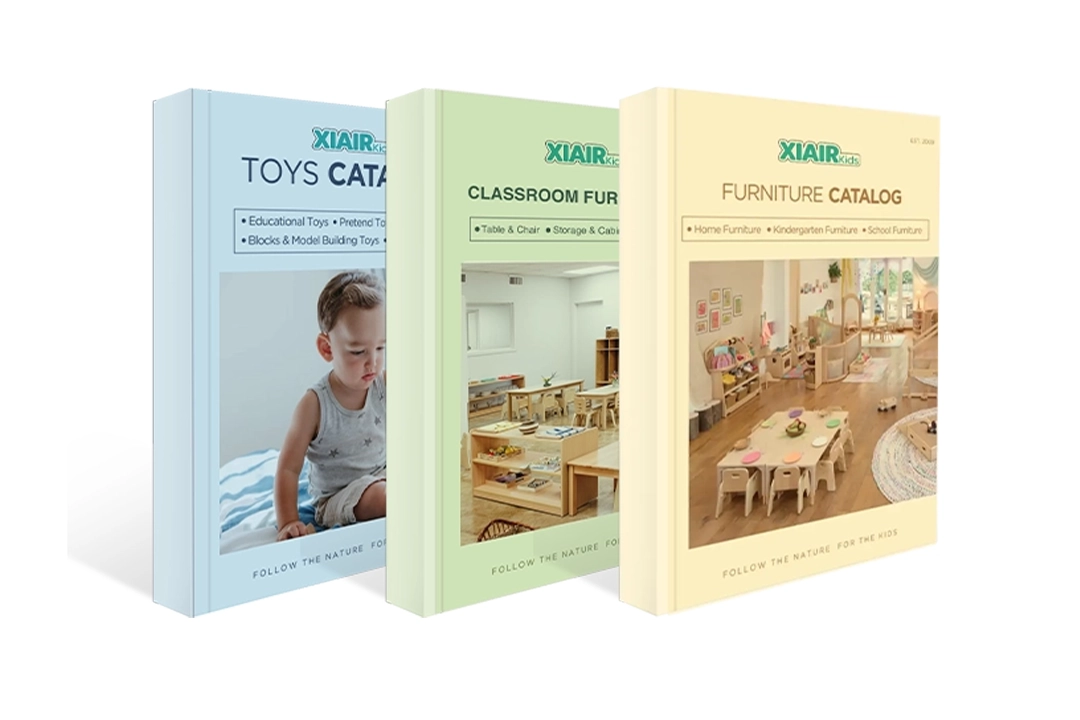How can teachers and caregivers truly understand a child’s unique needs? What questions should you ask to uncover their strengths, challenges, and learning styles? When you want to communicate with a child’s parents, what are the most effective questions to ask parents that help build trust and open up meaningful conversations?
Strong partnerships between parents and educators begin with genuine communication. Understanding a child’s unique strengths, challenges, and routines creates a supportive environment where learning can flourish. By preparing the right questions to ask parents about their child, you open the door to meaningful conversations that reveal learning styles, emotional needs, and social habits. These shared insights not only build trust but also ensure that every child receives care and guidance tailored to their individual journey.
In this article, we’ll dive into the most essential questions to ask parents, helping you create open dialogue, build trust, and form effective partnerships that nurture every child’s success.
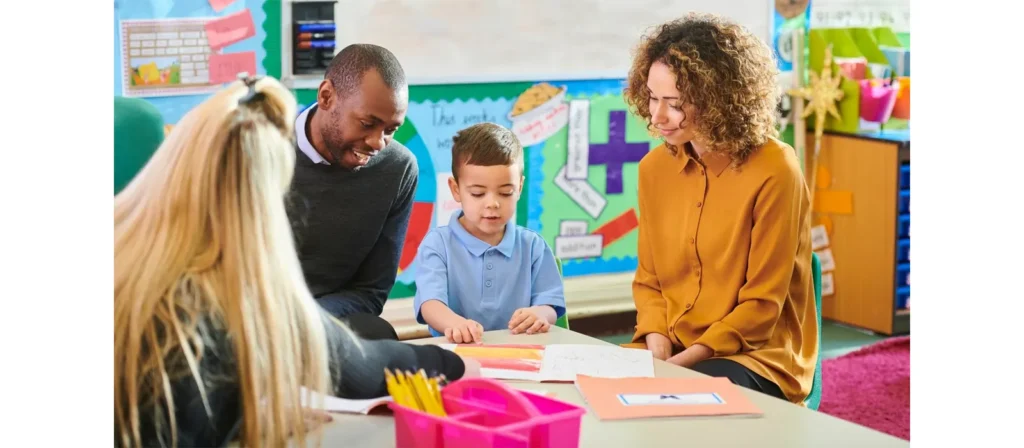
Why It’s Important to Ask Parents About Their Child
Parents know details about their child that teachers and caregivers may never see in a classroom, such as routines at home, favorite activities, or strategies that ease big emotions. Asking thoughtful questions to ask parents helps bridge these two worlds, giving you a fuller picture of the child.
When educators use well-chosen questions for parents, it builds trust and shows families that their voices matter. This shared insight prevents misunderstandings, supports consistency between home and school, and allows teachers to respond more effectively to each child’s needs.
In short, meaningful questions to parents create stronger partnerships. With open communication, families feel respected, teachers gain context, and children benefit from a supportive environment that helps them grow and thrive.
¡No solo lo sueñes, diséñalo! ¡Hablemos sobre tus necesidades de muebles personalizados!
How to Ask Parents About Their Child
Parent-Teacher Conferences
Conferences provide a structured time to talk in depth about a child’s progress, challenges, and goals. They give both teachers and parents space to ask questions, share insights, and make plans together. Keeping these meetings friendly and collaborative helps families feel comfortable opening up.
Start with Open-Ended Questions
Simple yes-or-no questions don’t reveal much. Instead, use open-ended questions to ask parents about their child. For example: “What helps your child feel comfortable in new situations?” or “What makes your child excited to learn?” These kinds of prompts encourage parents to share stories and details that highlight a child’s personality, strengths, and challenges.
Use Questionnaires as a Guide
Written tools like a parent questionnaire about their child, a preschool questionnaire for parents, or a daycare questionnaire for parents can help structure the conversation. These forms are beneficial during intake or at the start of a school year. They provide a baseline of information that teachers can later expand upon with follow-up questions.
Balance Listening with Asking
The most effective communication happens when educators listen as much as they speak. After posing questions to parents, reflect on what you’ve heard and, if needed, ask clarifying follow-ups. This not only deepens your understanding but also reassures parents that their perspectives are valued.

30 Questions Daycare Teachers Should Ask Parents
Daily Routines and Habits
1. What time does your child usually wake up and go to bed?
This gives you an idea of the child’s natural rhythm and energy levels. If a child consistently goes to bed late, you can anticipate sleepiness in the morning and adjust activities accordingly.
2. How many hours of sleep does your child need to feel rested?
Understanding sleep needs helps you support the child’s well-being. Children who don’t get enough rest may struggle with focus, behavior, or transitions during the day.
3. Does your child take naps, and if so, when?
Knowing nap times allows you to align your schedule with the child’s needs, avoiding overtiredness or resistance during group activities.
4. What does a typical morning routine look like in your home?
This helps you identify whether mornings are calm or rushed. If mornings are stressful, you may need to give extra support when the child arrives at daycare.
5. How does your child handle transitions, like leaving home or arriving at daycare?
Some children need extra comfort during drop-off, while others adapt quickly. This information lets you plan smoother transitions and offer the right support.
Salud y seguridad
6. Does your child have any allergies or dietary restrictions?
This is critical for safety. Knowing about food allergies or restrictions prevents accidents at snack and meal times and ensures you can plan safe menus.
7. Are there any medical conditions or medications we should know about?
Awareness of health conditions (such as asthma or eczema) allows caregivers to respond quickly and appropriately. It also helps you stay prepared in case of emergencies.
8. What foods does your child enjoy or refuse?
Preferences and dislikes matter in group settings. This helps you avoid mealtime struggles, introduce new foods gradually, and reduce stress for both the child and caregivers.
9. How does your child usually react when feeling unwell?
Some children become quiet and withdrawn, while others may become irritable. Understanding these patterns helps you spot early signs of illness and respond promptly.
10. Are there safety concerns or comfort items we should be aware of?
Items like blankets, pacifiers, or sensory tools can be essential for comfort and emotional regulation. Knowing safety concerns and comfort needs ensures you can keep the environment both safe and supportive.
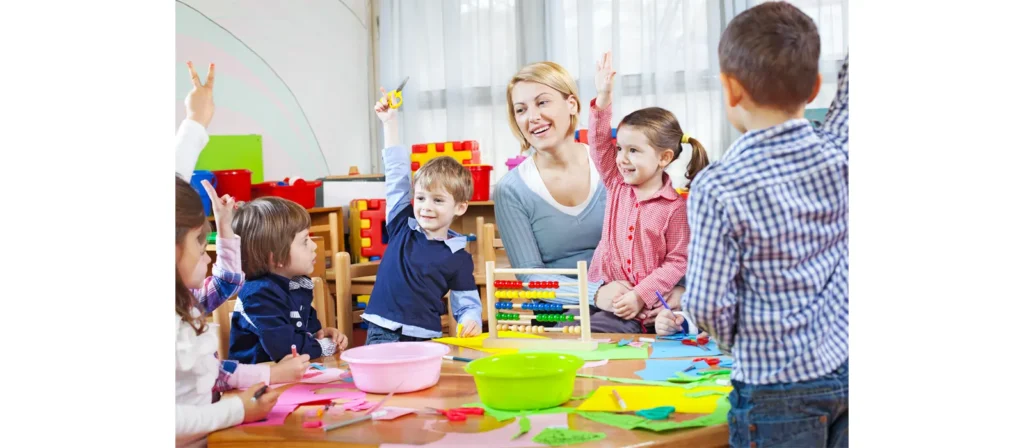
Personality and Behavior
11. How would you describe your child’s temperament (e.g., calm, energetic, cautious)?
This helps you anticipate how the child may respond to new environments or group activities. It also allows you to adjust your teaching style to better match their natural disposition.
12. What typically comforts your child when they are upset?
Every child has unique calming strategies. Knowing what works at home, whether it’s a hug, a favorite toy, or quiet time, helps you ease distress and create a consistent support system.
13. How does your child react to new environments or people?
Some children are outgoing, while others need time to warm up. This insight helps you manage introductions and transitions, reducing stress for the child.
14. What strategies do you use at home to guide behavior?
Consistency between home and daycare is key. When you use similar strategies as parents, children feel more secure and are more likely to respond positively to guidance.
15. Are there specific fears or sensitivities your child has?
Knowing fears (like loud noises or unfamiliar animals) allows you to prevent negative experiences. It also helps you prepare activities in a way that feels safe and supportive.
Learning and Development
16. What are your child’s favorite activities or interests right now?
This helps you connect with the child quickly and build engagement. When activities reflect their interests, such as trucks, drawing, or music, they feel more motivated to participate.
17. How does your child prefer to learn? By watching, listening, or doing?
Children have different learning styles. Understanding this helps you adapt teaching strategies, whether through visual aids, hands-on play, or verbal instruction.
18. What skills is your child currently practicing at home?
This allows you to support continuity between home and daycare. If the child is learning to count, tie shoes, or share toys, you can reinforce those same skills in your program.
19. Are there developmental milestones you are focusing on?
Parents may be watching for language growth, motor skills, or social independence. Knowing their focus helps you align expectations and share relevant progress updates.
20. What motivates your child to keep trying when something is hard?
Every child has a different source of motivation, from praise to rewards to simple encouragement. Understanding this helps you build resilience and persistence in daily activities.
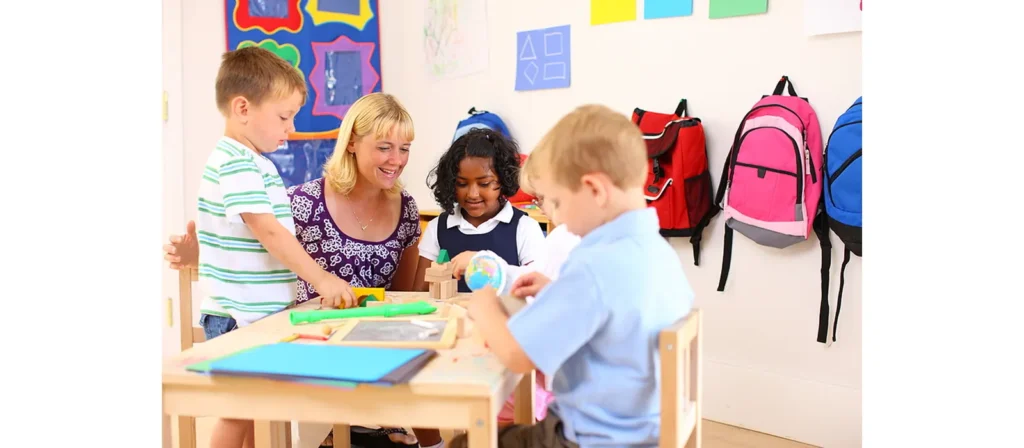
Social and Emotional Needs
21. How does your child interact with other children?
This helps you understand whether the child is more outgoing, shy, or prefers solitary play. It guides how you support peer relationships and group activities.
22. Does your child have siblings, and how do they get along?
Sibling dynamics often shape social skills. If the child is used to sharing, negotiating, or being the youngest/oldest, this provides context for how they might behave with peers.
23. How does your child express emotions like anger, sadness, or excitement?
Children communicate emotions in different ways, through words, body language, or behavior. Knowing these patterns helps you respond quickly and appropriately to their needs.
24. What helps your child feel safe and secure in new situations?
Transitions can be stressful for children. Understanding what reassures them, whether it’s a comfort item, a familiar routine, or gentle encouragement, supports smoother adjustments.
25. How does your child handle separation from you?
Separation anxiety is common, especially in early childhood. Knowing how a child copes during goodbyes allows you to provide the right comfort strategies at drop-off.
Family Expectations and Communication
26. What are your goals for your child in our daycare program?
This helps you align with parents’ priorities, whether they value socialization, early academics, or emotional development. Understanding their goals builds trust and makes it easier to show how your program supports them.
27. Are there routines or traditions at home we should be aware of?
Family routines and cultural practices shape a child’s daily life. Being aware of them allows you to respect family values and create an inclusive environment where the child feels recognized.
28. How would you like us to communicate with you (phone, email, daily notes)?
Parents have different preferences for updates. Some want quick texts, while others prefer detailed reports. Knowing this prevents frustration and ensures communication flows smoothly.
29. Are there concerns you would like us to keep an eye on during the day?
Parents may be worried about eating habits, nap times, or social interactions. When you ask directly, it shows you care about their priorities and are willing to be observant on their behalf.
30. What’s the most important thing you’d like us to know about your child?
This open-ended question gives parents space to share anything not covered before. Often, it reveals valuable insights such as fears, passions, or family circumstances that help you support the child more holistically.
Building Strong Partnerships Through Questions
Asking thoughtful questions to ask parents is more than a formality. It is the foundation of trust and collaboration. When teachers and caregivers listen carefully, they gain insights that help them support each child more effectively.
Whether through a quick conversation, a parent teacher conference, or a simple parent questionnaire about their child, these exchanges strengthen relationships and ensure children receive consistent care. With open communication, everyone benefits: parents feel heard, educators feel supported, and children thrive.

